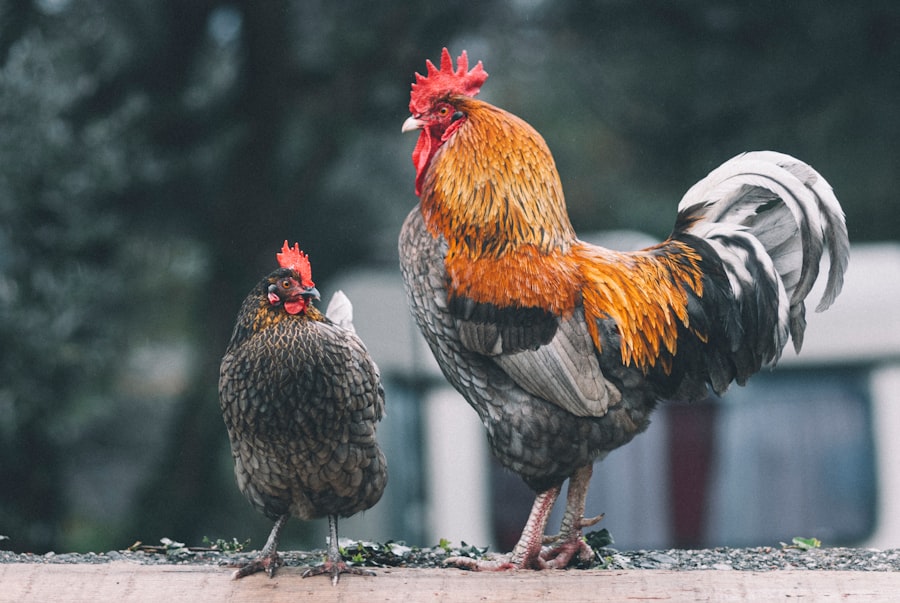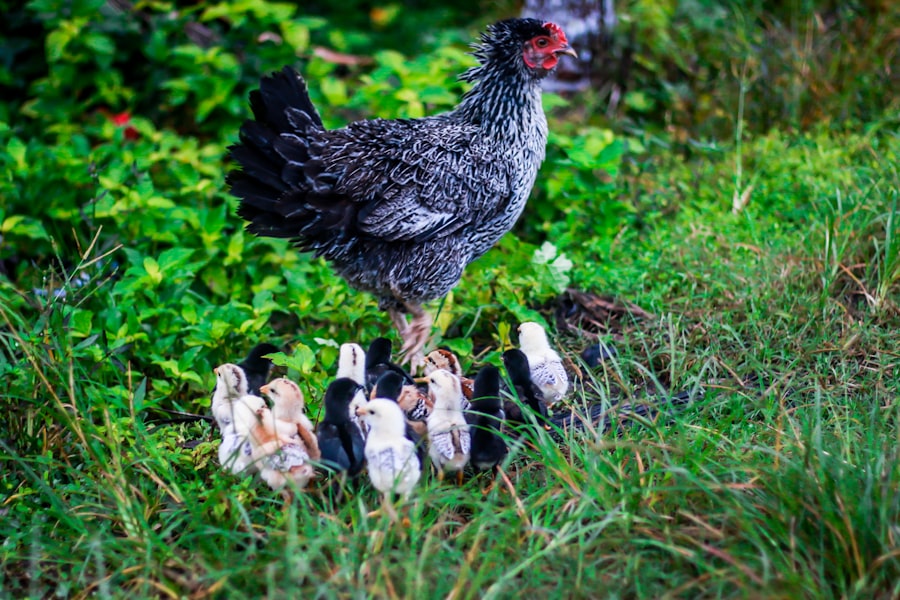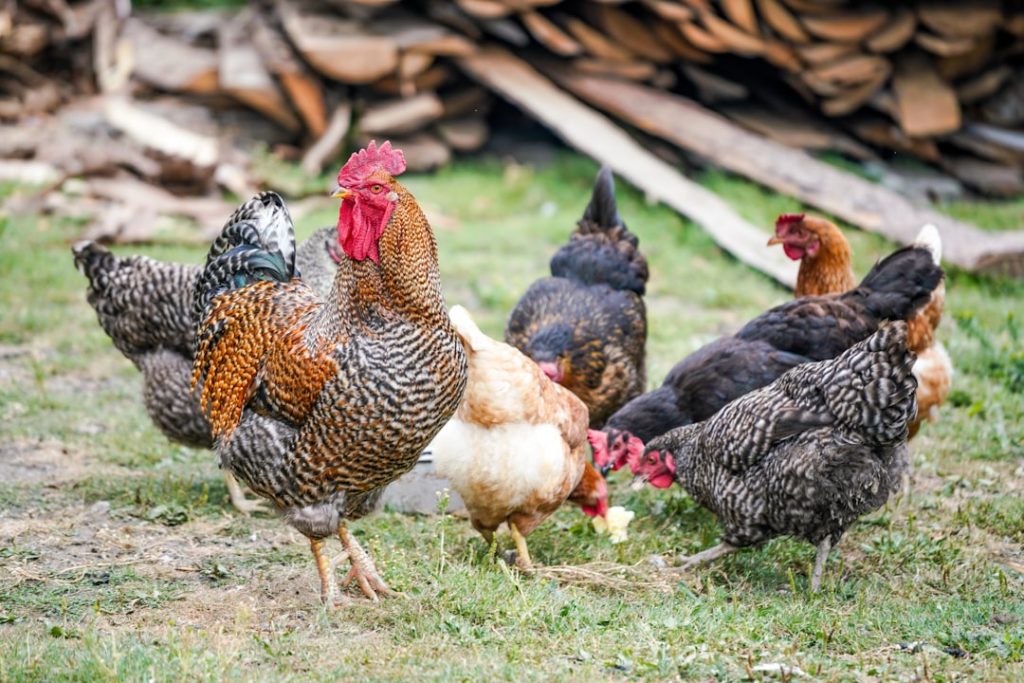Chickens are complex creatures with intricate behaviors that merit closer examination. Their social nature is evident in their flock-based living arrangements and well-defined hierarchical structures. Communication among chickens involves diverse vocalizations and body language, and they possess a remarkable capacity for facial recognition and memory.
Self-preservation instincts manifest in their cautious and alert demeanor, as they constantly scan their surroundings for potential threats and adapt swiftly to environmental changes. These traits underscore the intelligence and adaptability of chickens, revealing a sophisticated behavioral repertoire. Natural behaviors play a crucial role in the physical and psychological well-being of chickens.
Foraging, dust bathing, and roosting are essential activities that contribute to their overall health and mental stimulation. Foraging allows chickens to express innate instincts while obtaining vital nutrients. Dust bathing promotes healthy skin and feather maintenance, while roosting provides a sense of security and rest.
Recognizing and accommodating these natural behaviors is fundamental to ensuring a high quality of life for chickens in captivity or domestic settings.
Table of Contents
Key Takeaways
- Chickens exhibit a wide range of behaviors that are influenced by their environment and social interactions.
- The anatomy of a chicken’s neck includes a complex system of muscles and bones that allow for flexibility and stability.
- Neck muscles play a crucial role in keeping a chicken’s head still, allowing for precise movements and stability.
- Chickens have evolved adaptations such as a small, lightweight skull and a unique neck structure to maintain head stability.
- Head stability is crucial for chickens to perform essential behaviors such as foraging, predator detection, and social interactions, impacting their overall welfare.
Anatomy of a Chicken’s Neck
The Cervical Vertebrae and Neck Movement
The cervical vertebrae, or neck bones, are relatively long and flexible, allowing for the extensive movement of the head. This flexibility is essential for the chicken’s ability to peck, forage, and engage in other essential behaviors.
The Role of Neck Muscles
The neck muscles play a crucial role in supporting the head and allowing for precise movements. These muscles are well-developed and provide the strength and flexibility needed for the chicken to perform various functions, such as pecking, grooming, and eating.
Vital Structures and Functions
The neck also contains important structures such as the esophagus, trachea, and major blood vessels, which are vital for the chicken’s ability to eat, breathe, and circulate blood throughout its body. Additionally, the neck is home to the crop, a specialized pouch in the esophagus where food is temporarily stored and softened before digestion. Overall, the anatomy of a chicken’s neck is a testament to the remarkable complexity and efficiency of biological engineering, allowing for the complex movements and functions necessary for the chicken’s survival.
The Role of Neck Muscles in Keeping the Head Still

The neck muscles of a chicken play a crucial role in keeping the head still and stable. These muscles work together to support the weight of the head and allow for precise movements. The sternocleidomastoid muscles, located on either side of the neck, are particularly important for controlling the movement of the head.
These muscles allow the chicken to turn its head from side to side and up and down with remarkable precision. The trapezius muscles, which run along the back of the neck, provide additional support and stability. The coordination of these muscles is essential for the chicken’s ability to engage in essential behaviors such as pecking for food, grooming, and maintaining awareness of its surroundings.
Without strong and flexible neck muscles, chickens would struggle to perform these vital activities. The ability to keep the head still is also important for maintaining balance and stability, especially when walking or perching. Overall, the neck muscles play a crucial role in supporting the head and allowing for the precise movements necessary for a chicken’s survival.
Adaptations for Maintaining Stability
Chickens have evolved a range of adaptations to maintain stability and control over their head movements. One important adaptation is the development of strong neck muscles that provide support and flexibility. These muscles allow chickens to keep their heads still while engaging in activities such as pecking for food or grooming their feathers.
Additionally, chickens have a relatively short and stout neck compared to other birds, which provides additional stability and reduces the risk of injury. Chickens also have a remarkable ability to adjust their posture and body position to maintain stability. When walking or perching, chickens make subtle adjustments to their body position to keep their heads still and maintain balance.
They also use their wings for additional support when needed, especially when navigating uneven terrain or perching on branches. These adaptations allow chickens to move with agility and confidence while keeping their heads stable, even in challenging environments.
The Importance of Head Stability for Chickens
Head stability is crucial for chickens’ overall well-being and survival. It allows them to engage in essential behaviors such as feeding, grooming, and maintaining awareness of their surroundings. Without stable head movements, chickens would struggle to perform these vital activities, which are essential for their physical health and mental stimulation.
Head stability also plays a crucial role in maintaining balance and coordination, especially when walking, running, or perching. In addition to its practical importance, head stability also has implications for chicken welfare. Chickens that are unable to keep their heads still may experience discomfort or even injury as they struggle to perform basic activities.
This can have negative effects on their physical health and psychological well-being. Therefore, ensuring that chickens have the ability to maintain stable head movements is essential for promoting their welfare and quality of life.
Behavioral and Environmental Factors Affecting Head Stability

Behavioral Factors
Stress and fear can cause chickens to become tense and hyper-vigilant, leading to erratic head movements and reduced stability. Similarly, overcrowding or competition within a flock can lead to increased tension and aggression, which can impact a chicken’s ability to keep its head still.
Environmental Factors
Environmental factors such as uneven terrain or slippery surfaces can also affect head stability. Chickens may struggle to maintain balance on uneven ground or when perching on unstable surfaces, leading to increased head movements as they try to compensate for these challenges.
Creating a Supportive Environment
Providing chickens with well-maintained living environments that offer stable footing can help promote better head stability. By addressing these factors, we can help ensure that chickens have the support they need to maintain stable head movements and engage in essential behaviors with confidence.
Promoting Chicken Welfare
Overall, understanding the behavioral and environmental factors that affect head stability is crucial for promoting the welfare of chickens.
Conclusion and Implications for Chicken Welfare
In conclusion, understanding the importance of head stability in chickens is crucial for promoting their welfare and quality of life. The anatomy of a chicken’s neck and the role of its neck muscles are essential for supporting stable head movements and allowing for precise behaviors such as feeding, grooming, and maintaining awareness of their surroundings. Chickens have evolved a range of adaptations to maintain stability, including strong neck muscles and adjustments in posture and body position.
It is important to consider behavioral and environmental factors that can affect a chicken’s ability to maintain stable head movements. By addressing these factors, we can help ensure that chickens have the support they need to engage in essential behaviors with confidence. Ultimately, promoting head stability in chickens is essential for their physical health, psychological well-being, and overall welfare.
By understanding and respecting the natural behaviors and adaptations of chickens, we can provide them with environments that support their ability to keep their heads still and thrive.
If you’re interested in learning more about how chickens keep their head still, you might also want to check out this article on The Chicken Coop Country Diner. It provides valuable information on how to create a comfortable and safe environment for your chickens to thrive.
FAQs
What is the purpose of a chicken keeping its head still?
Chickens keep their head still to maintain balance and focus on their surroundings. This helps them to stay alert and aware of potential threats or opportunities for food.
How do chickens keep their head still?
Chickens have a specialized neck structure that allows them to keep their head still while their body moves. This is achieved through a combination of muscles, tendons, and a unique joint structure in their neck.
Why is it important for chickens to keep their head still?
Keeping their head still allows chickens to accurately assess their environment and make quick decisions about potential dangers or sources of food. It also helps them to maintain their balance while moving and foraging.
Can chickens move their head at all?
While chickens can keep their head still for extended periods, they are still capable of moving their head to some extent. However, their ability to keep their head still is a key adaptation for their survival in the wild.
Meet Walter, the feathered-friend fanatic of Florida! Nestled in the sunshine state, Walter struts through life with his feathered companions, clucking his way to happiness. With a coop that’s fancier than a five-star hotel, he’s the Don Juan of the chicken world. When he’s not teaching his hens to do the cha-cha, you’ll find him in a heated debate with his prized rooster, Sir Clucks-a-Lot. Walter’s poultry passion is no yolk; he’s the sunny-side-up guy you never knew you needed in your flock of friends!







